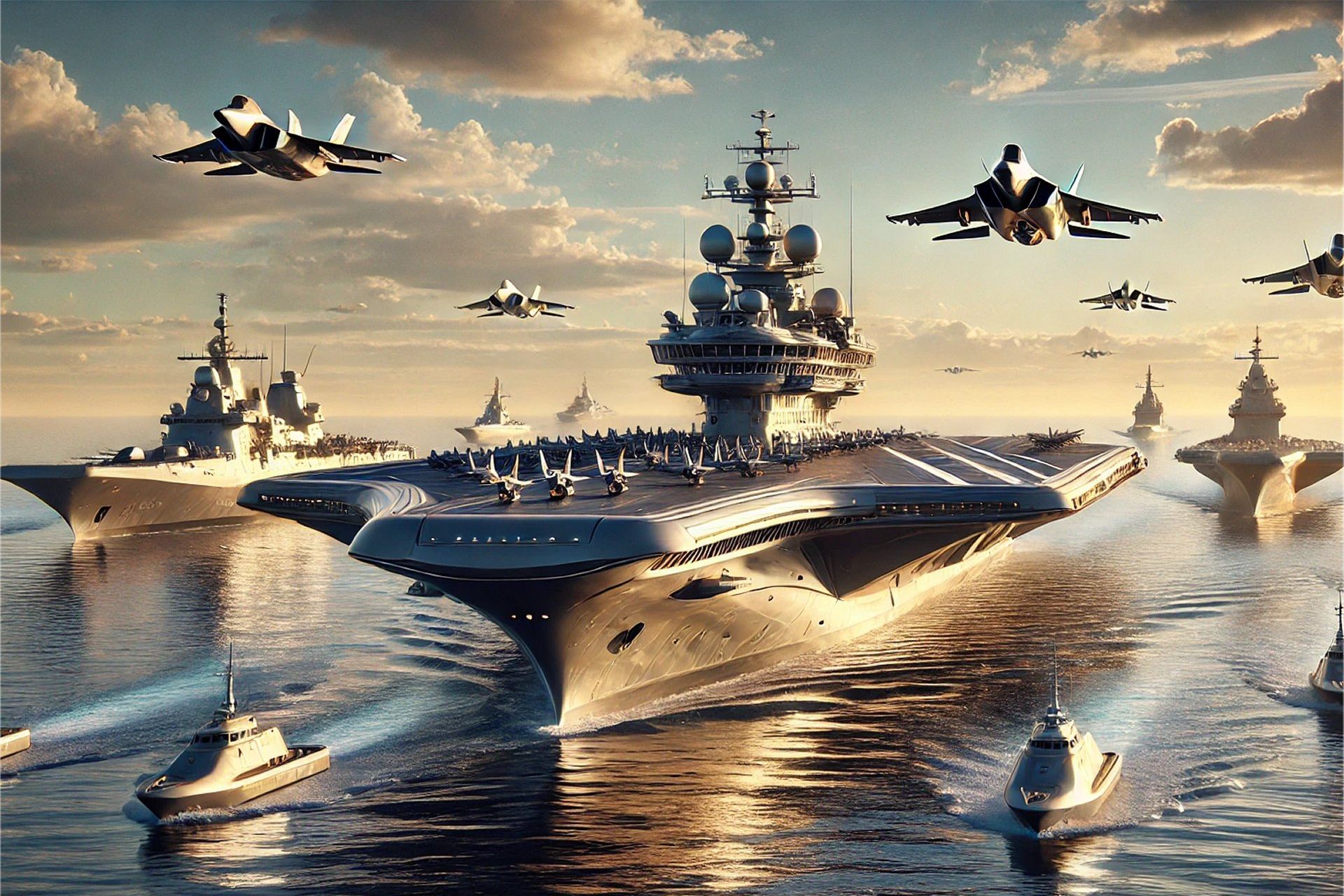Breaking News
Analysis: role and strategic importance of Carrier Strike Groups in modern naval warfare.
The future of the Carrier Strike Group (CSG) is set to evolve significantly in response to the dynamic and complex nature of modern naval warfare. As we look towards the future, the CSG must adapt to new threats and technological advancements to maintain its strategic relevance and operational effectiveness.
Follow Army Recognition on Google News at this link

Artist rendering of a futuristic Carrier Strike Group concept. (Picture source: Generated by AI)
Understanding the aircraft carrier is foremost about considering what it brings to naval operations: primarily, its sensors and aircraft cover an area as vast as the national territory. Additionally, it offers immense power, diverse weaponry, and extensive reach. Its mobility is another advantage: constantly moving, it can cover distances equivalent to traveling from Dunkirk to Marseille in a day.
However, an aircraft carrier should not be viewed in isolation. It operates within a Carrier Strike Group (CSG), comprising accompanying units such as frigates, submarines, maritime patrol aircraft, a supply ship, and the aircraft from the embarked air wing.
Deploying a CSG means deploying a network of sensors and weapons extending over thousands of kilometers, capable of operating in all environments and ensuring information fusion. At sea, this is the surest way to achieve superiority from the seabed to space. Given the current challenges to maritime space, the CSG offers a range of options.
Therefore, aircraft carriers and CSGs must be considered in terms of their employment rather than merely their capabilities. History shows that their use has evolved with military needs and strategic situations. They are often seen as tools to convey strategic messages to competitors, as demonstrated by the US Navy's deployment of two aircraft carriers to the Eastern Mediterranean last October to dissuade Iran from regional escalation.
Since the Cold War, the ability to project power 2000 kilometers inland has led to CSGs being used in missions such as those in Kosovo, Afghanistan, Libya, and Syria over the past 30 years. Looking further back, aircraft carriers were also crucial in escort missions during World War II.
Thus, the use of aircraft carriers is anything but dogmatic, highlighting their adaptability. The emergence of this capability was made possible by the curiosity, intellectual vigor, and realism of successive generations. In combat, adaptability is key to victory, requiring ongoing intellectual, doctrinal, and material efforts to enable this adaptation.
This was the focus of the Paris Naval Conference last January with the American, British, Italian counterparts, and a representative of the Indian Navy. This collective work aims to deepen these debates.
Strategic dynamics are evolving, marked by intensified military capacities challenging the international order governed by law. This shift is especially evident in maritime regions like the Black Sea, Red Sea, and South China Sea, reflecting increased rearmament and force usage.
Accelerating History: Towards High-Intensity Tensions and Conflicts
Environmental and political accelerations drive growing tensions, with climate change, biodiversity loss, and pollution increasing conflict risks. Concurrently, digital advancements and information technology reshape political dynamics, enabling mid-sized powers to seek greater global influence.
The Role of Carrier Strike Groups in This Changing World
The evolving balance of power and international law signifies the end of operational comfort for Western countries, turning the sea into a conflict zone. This shift necessitates mastering vertical spaces, from seabeds to outer space. The transparency of the battlefield poses a continuous challenge, demanding control over the underwater environment, exo-atmospheric and cyber capabilities, and cost-effective circumvention of expensive decision-making systems using drones.
Carrier Strike Groups (CSGs) are crucial in this evolving landscape, as recent deployments in the Eastern Mediterranean and Red Sea have shown. CSGs deploy hypersuperiority bubbles, essential for naval operations, and serve as strategic signaling tools, fostering technological and operational know-how with partners and allies.
Adapting to Technological Breakthroughs
Ensuring CSG superiority requires anticipating technological advances, like generative AI and quantum revolution, incrementally improving connectivity, robotics, data management, and networks. These systems will be essential for multi-domain operations and the progressive verticality of the operational theater. Addressing human resources remains a critical challenge for all navies.
In a world where force becomes the primary means of resolving disputes, escalating maritime tensions necessitate reassessing military capabilities and preparing for the potential return of naval conflicts. Carrier Strike Groups, with their operational versatility and strategic importance, remain central to defense policies.


























